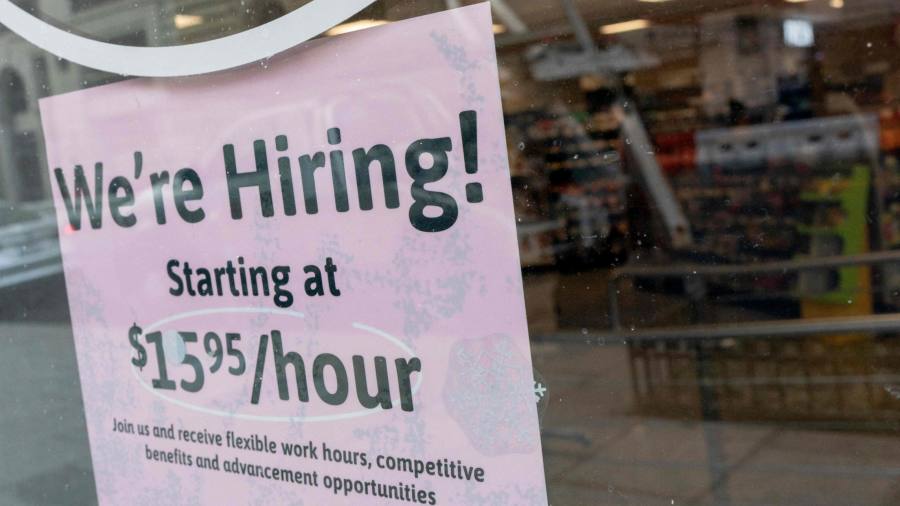Receive free US interest rates updates
We’ll send you a myFT Daily Digest email rounding up the latest US interest rates news every morning.
Investors pushed the yield on the two-year Treasury note to its highest level since 2007 and dumped stocks after unexpectedly strong US employment data raised fears the Federal Reserve will be forced to keep raising interest rates.
Employment in the private sector increased by 497,000 roles last month, up from an increase of 267,000 in May and the biggest jump in more than a year, according to data from ADP. The figure was roughly double what economists polled by Bloomberg had forecast. There were major gains in the hospitality and leisure sectors, as well as in construction and transportation.
Yields on US Treasury bonds soared following the data release. The two-year Treasury yield, which moves with interest rate expectations, rose to its highest level since 2007, breaking through the significant threshold of 5 per cent.
The benchmark 10-year yield rose to its highest level since March, breaking through the 4 per cent threshold. Bond yields move inversely to price.
The move in yields underscored a growing consensus that the Fed will have to resume raising rates in July after pausing its tightening campaign in June for the first time in more than a year. A top policymaker on Thursday signalled her support for a rate rise this month.
On Wall Street, an early sell-off picked up steam, leaving the benchmark S&P 500 down 1.2 per cent just before midday in New York, and the tech-heavy Nasdaq Composite 1.3 per cent lower.
The US labour market has remained extraordinarily strong, even as the Fed has raised interest rates to more than 5 per cent in its aggressive campaign to squash inflation. Higher wages typically push inflation higher.
“This was very, very strong hiring data. The moderation in some of the wage data was encouraging for the Fed, but there is nothing in here that would make them hesitant to hike at the end of the month,” said Ben Jeffery, a US rates strategist at BMO Capital Markets.
Separately on Thursday, labour department figures showed job vacancies fell more than expected to 9.8mn on the last business day of May, from a revised 10.3mn in April. “Quits”, considered by economists to be a more reliable indicator of labour market health than the volatile openings number, increased by 250,000 to 4mn.
Taken together, the job openings reported were consistent with a domestic labour market that remains relatively resilient despite a year-long campaign by the Fed to increase rates.
The data comes ahead of the government’s own jobs numbers on Friday, which it is estimated will show that hiring slowed in June. The labour department is forecast to report that the US added 200,000 jobs last month, according to economists polled by Bloomberg, down from 339,000 in May.
Economists cautioned that the ADP data was not a very good harbinger of the coming government figures.
“Some months it is stronger than the government payrolls figure, sometimes it is much weaker,” said Eric Winograd, fixed income economist at AllianceBernstein. “ADP is noisy and it does not necessarily predict what will be in the government’s jobs report.”
“I do not think the market should react too strongly to this number. This number alone doesn’t change my fundamental view,” Winograd said.
Additional reporting by Mary McDougall in London and Taylor Nicole Rogers in New York
Read the full article here





